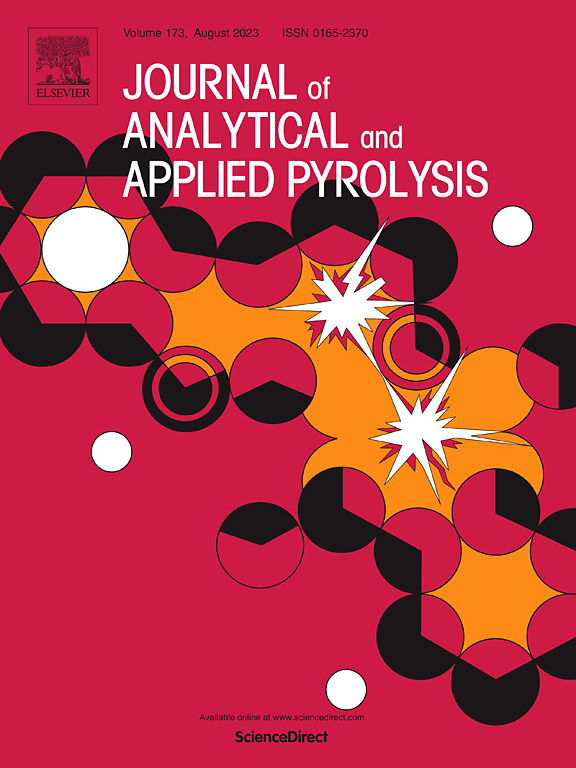Syngas production from textile dyeing sludge via carbon dioxide-assisted pyrolysis
IF 5.8
2区 化学
Q1 CHEMISTRY, ANALYTICAL
引用次数: 0
Abstract
The textile dyeing process utilizing synthetic dyes generates by-products known as textile dyeing sludge (TDS), which comprises various harmful chemicals. However, disposal of TDS through conventional methods of waste present significant environmental hazards, leading to the dissemination of hazardous chemicals into the ecosystem. Therefore, this study introduces thermo-chemical platform for the disposal of TDS. Specifically, this study employs CO2 as a reactive feedstock to maximize the production of syngas and minimize formation of toxic chemicals. Prior to pyrolysis, the hazardous potential of TDS was qualitatively evaluated. The pyrolysis of TDS under CO2 environments demonstrated gas-phase reactions between volatile substances and CO2. These reactions led to increased CO production while simultaneously reducing the formation of toxic compounds such as benzene derivatives and polycyclic aromatic hydrocarbons (PAHs) within pyrogenic oil. The reduction in benzene derivatives and PAHs was quantified as −10.31 % under single-step pyrolysis and −25.16 % under multi-step pyrolysis. To expedite kinetics of gas-phase reactions, Ni-based catalyst was employed for catalytic pyrolysis of TDS. Compared to non-catalytic pyrolysis, the Ni catalyst enhanced CO production by expediting gas-phase reactions. Compared to multi-step pyrolysis under the CO2 condition (3.81 mol%), the CO formation from catalytic pyrolysis under CO2 condition exhibited significant enhancement (15.35 mol%). Consequently, all experimental results highlight potential of pyrolysis with CO2 as a promising method for the disposal of TDS, while converting it into valuable energy resources.
求助全文
约1分钟内获得全文
求助全文
来源期刊
CiteScore
9.10
自引率
11.70%
发文量
340
审稿时长
44 days
期刊介绍:
The Journal of Analytical and Applied Pyrolysis (JAAP) is devoted to the publication of papers dealing with innovative applications of pyrolysis processes, the characterization of products related to pyrolysis reactions, and investigations of reaction mechanism. To be considered by JAAP, a manuscript should present significant progress in these topics. The novelty must be satisfactorily argued in the cover letter. A manuscript with a cover letter to the editor not addressing the novelty is likely to be rejected without review.

 求助内容:
求助内容: 应助结果提醒方式:
应助结果提醒方式:


